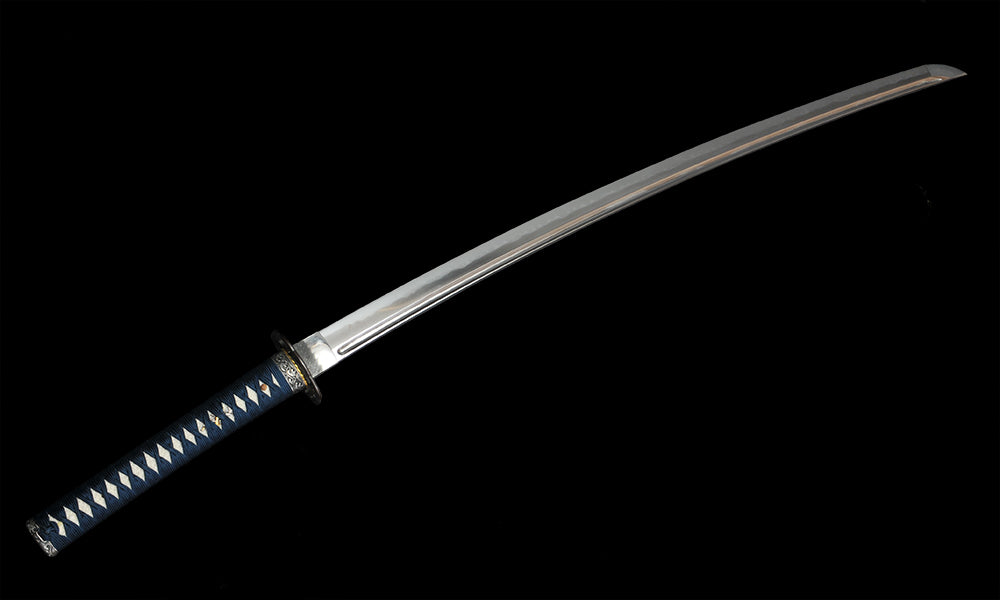The curvature of Katana
As mentioned in the article about the Tsukuri-kom(structure) of the Japanese sword, the Japanese sword was originally a straight sword with no curve at all, and was used for purposes of striking, plunging, and stabbing. As the methods of battle evolved, the function of chopping down became more common. The swordsmiths spent a lot of time thinking of how to make the best swords, and to give more cutting ability to the swords, they came up with the idea of adding curves the to blade. This is how curved swords were born.
Why curved?
To chop down with the blade, you need to strike down the sword and then pull it back. This movement is called “hiki-nuke”. In this movement, the arms move in a circular trajectory with the shoulders of elbows at the center. For this reason, having a curved blade allows for a smooth hiki-nuke movement.

Koshi-zori
When small-number cavalry battles were the main, swords were called “koshi-zori” and had the curve close to the hands. This style of tachi can be seen mostly between the mid Heian period and Kamakura period.

Saki-zori
Conversely, having the curve at the top of the sword, at the place where you cut, is called “saki-zori”. This was more suited to infantry battles in larger groups. This type of sword can be seen in ones made between the Muromachi and Azuchi-Momoyama periods.

Muzori
There were also swords that had a very little curve, almost like the shinai. Called “muzori”. This can be seen from the mid Edo period when swordsmanship began to develop. The late Edo period, when assassin swords were popular, was also a period when the muzori swords were quite common.

Torii-zori
Some swords have the curve neither at the handle nor at the top end, but around the middle. This is called “naka-zori”, but this pattern looks similar to the cap of the guard frame (torii) of the Shinto shrines, giving it its alternative name “torii-zori”. Yet another name for it was “kyo-zori”, the naka-zori was common among the traditional swordsmiths at Yamashiro (Kyoto) during the Kamakura period.

Uchi-zori
There is also a type called “uchi-zori” in which the curve is made toward the blade-end, which is not very common for the tachi or uchigatana.
Summary
The sori, which was born as swordsmiths thought through over and over how to make swords that can cut better, is perhaps the feature that best characterizes the Japanese sword. If you have a Japanese sword by your side, it may be interesting to look upon and appreciate the most beautiful curve of all weaponry while being mindful of the historical background.

Leave a comment: